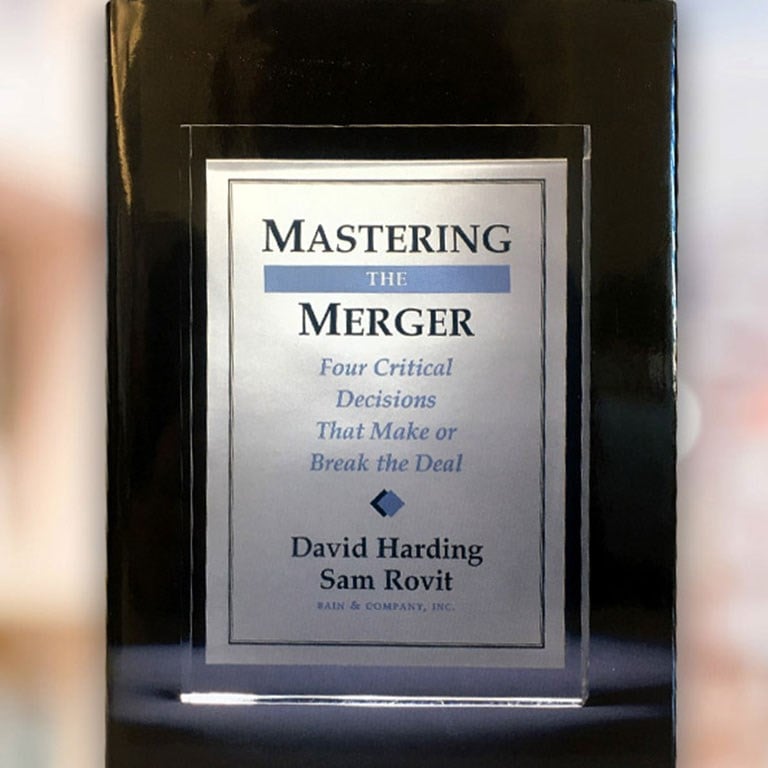Article
Deal making is glamorous; due diligence is not. But if your company is beginning to look again at the growth opportunities offered by acquisitions, take heed: Your due diligence team can make or break your business.
Making the right calls consistently about acquisition targets is one of the most difficult challenges that executives encounter. When Bain & Company surveyed 250 senior managers with M&A responsibilities, half said their due diligence process had overlooked major problems, and half also found that targets had been dressed up to look better for deals. Two-thirds said their approach routinely overestimated the synergies available from acquisitions. Overall, only 30% of executives were satisfied with their due diligence processes. A third acknowledged they hadn't walked away from deals despite nagging doubts.
What can companies do to address these common shortcomings? For starters, they can rid themselves of their assumptions. Private equity firms tell us their acquirers' advantage lies in being industry outsiders: they force themselves to ask basic questions about how an acquisition truly will make money for investors.
Top corporate buyers take a similar approach: "When I see an expensive deal, and they say it was a 'strategic' deal," says Craig Tall, vice chair of corporate development at Washington Mutual," it's a code for me that somebody paid too much."
Bain's research has also turned up other tactics that successful acquirers commonly use. Despite differences in emphasis, all build their due diligence process as an investigation into four areas:
Get to know the customers. Successful acquirers begin by drawing a map of the target's market—its size, its growth rate and how it breaks down by geography, product and customer segment. This allows comparisons of a target's customer segments—their profitability, promise and vulnerability—with its competitors. The most effective teams don't rely on what the target tells them about its customers; they approach the customers directly.
Check out the competition. How does the target's industry presence compare with its rivals' in terms of market share, revenues, and profits by geography, product and segment? By looking at the pool of available profits, companies can determine whether the target is getting a fair (or better) share of industry profits compared with its rivals.
Verify the cost economics. Do the target's competitors have cost advantages? Why is the target performing above or below expectations? When considering postmerger opportunities for reducing costs, firms can assess whether the benefit of sharing costs with other business units will outweigh the lack of focus that can arise from spreading costs across multiple businesses.
Take stock of capabilities. Successful acquirers aren't looking to buy just a P&L and a balance sheet but also want capabilities such as management expertise. Capabilities may not be easy to measure, but taking them for granted can be too large a risk.
To arrive at a business's true stand-alone value, all accounting idiosyncrasies must be stripped away. Often, the only way to do that is to look beyond the reported numbers—by sending a due diligence team into the field.
That's what Cinven, a leading European private equity company, did before acquiring UK theater chain Odeon Cinemas. Rather than simply reviewing aggregate revenues and costs, Cinven's analysts combed through the numbers of each cinema. They were able to paint a rich picture of local demand patterns and competitor activities, including data on attendance, revenues, operating costs and likely capital expenditures. That microexamination revealed that estimates of sales growth at the national level weren't justified by local trends. Armed with the findings, Cinven negotiated to pay £45 million less than the original asking price.
Finally, due diligence must determine a walk-away price. For this price to have meaning, it can't be academic-successful deal makers are willing to walk away and often do.
In the end, effective due diligence is about balancing opportunity with informed skepticism. It's about testing every assumption and questioning every belief. It's about not falling into the trap of thinking you'll be able to fix problems after the fact. By then, it's usually too late.
Geoffrey Cullinan directs Bain & Company's European private equity practice from London. Jean-Marc Le Roux, in Paris, and Rolf-Magnus Weddigen, in Munich, also work in Bain's European private equity practice.

Mastering the Merger
Learn more about the core decision strategies that help companies win in M&A.